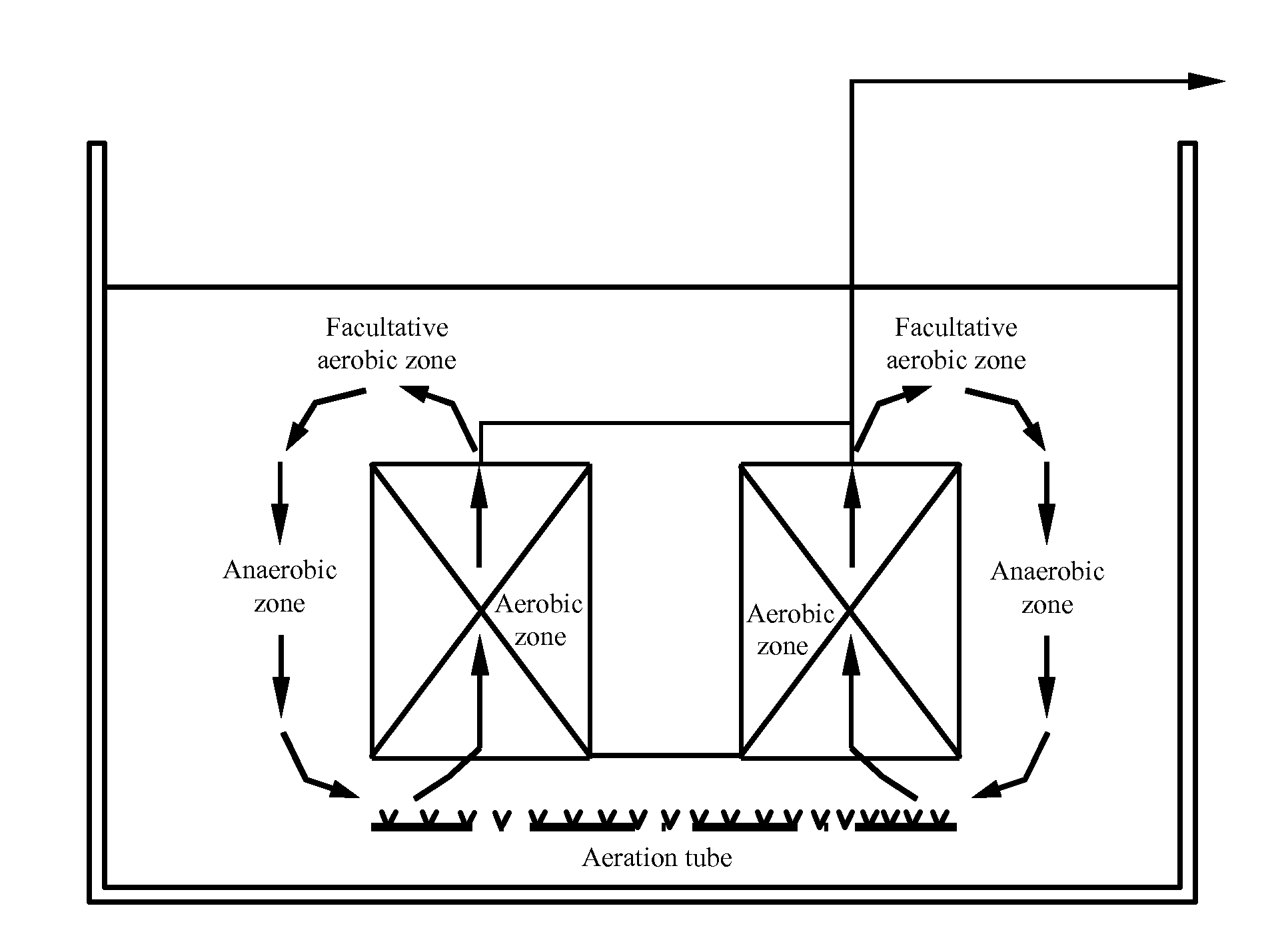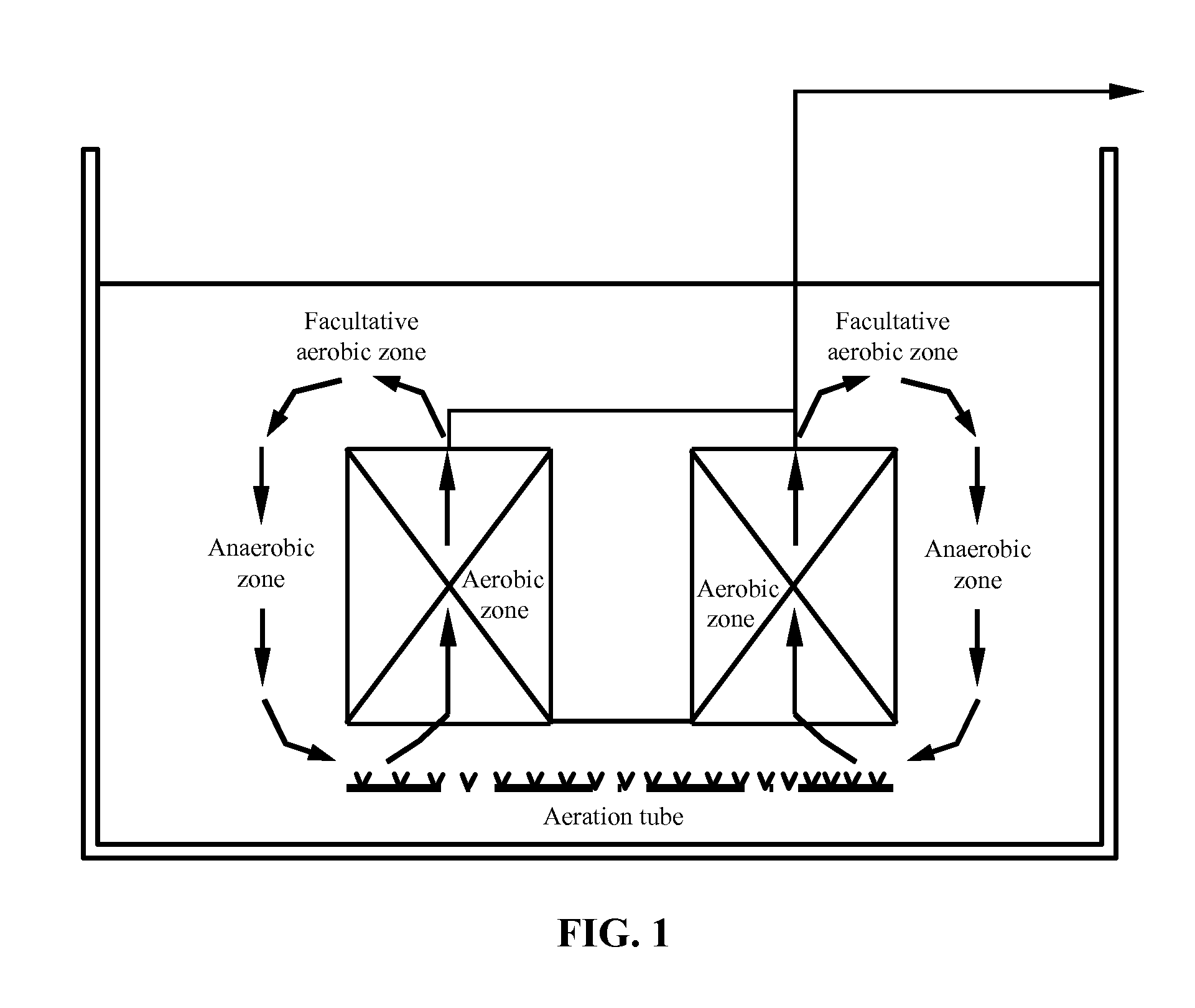Method for removing phosphorus using membrane bioreactor
a bioreactor and membrane technology, applied in the field of phosphorus removal, can solve the problems of large area and complicated process
- Summary
- Abstract
- Description
- Claims
- Application Information
AI Technical Summary
Benefits of technology
Problems solved by technology
Method used
Image
Examples
example 1
[0025
[0026]In a sewage treatment plant, the daily sewage treatment is 80 m3 / d. The membrane bioreactor is facultative aerobic, and the treatment process adopts the method of the invention, involving in no sludge discharge. The TP concentration of the sewage is monitored, and the effect of phosphorus removal is as follows.
[0027]The mean value of total phosphorus of influent is 2.82 mg / L, and that of effluent is 0.84 mg / L, the mean value of phosphorus removal is 1.98 mg / L. The total phosphorus content in the sludge is between 1.22% and 1.69%, with mean value of 1.49%. This is equivalent to phosphorus removal by a conventional biochemical process, and phosphorus is not accumulated in the sludge. Although no sludge discharged, the total phosphorus loss reaches 70%. Monitoring the gas at the top of the treatment system shows the phosphine content is between 1 and 3 ppm, which is much higher than that in the air (0 ppm). Thus, without sludge discharge, the phosphorus is successfully remov...
PUM
 Login to View More
Login to View More Abstract
Description
Claims
Application Information
 Login to View More
Login to View More - R&D Engineer
- R&D Manager
- IP Professional
- Industry Leading Data Capabilities
- Powerful AI technology
- Patent DNA Extraction
Browse by: Latest US Patents, China's latest patents, Technical Efficacy Thesaurus, Application Domain, Technology Topic, Popular Technical Reports.
© 2024 PatSnap. All rights reserved.Legal|Privacy policy|Modern Slavery Act Transparency Statement|Sitemap|About US| Contact US: help@patsnap.com










